NAKS 20D-DBFF-900 Bedienungsanleitung
NAKS
Dunstabzugshaube
20D-DBFF-900
Lies die bedienungsanleitung für NAKS 20D-DBFF-900 (6 Seiten) kostenlos online; sie gehört zur Kategorie Dunstabzugshaube. Dieses Handbuch wurde von 3 Personen als hilfreich bewertet und erhielt im Schnitt 4.7 Sterne aus 2 Bewertungen. Hast du eine Frage zu NAKS 20D-DBFF-900 oder möchtest du andere Nutzer dieses Produkts befragen? Stelle eine Frage
Seite 1/6

RECEIVING AND INSPECTION
Immediately upon receipt of a shipment, carefully inspect for
damage and shortage. Turn the impeller by hand to see that it
turns freely and does not bind. If any damage and/or shortage is
detected or suspected, the carrier must be asked to conduct an
inspection. The consignee’s representative should not accept a
shipment without a notation on the delivery receipt indicating items
not delivered or the apparent extent of damage.
When a shipment is opened and damage is found which was not
evident externally (concealed damage), it is mandatory that the
consignee request an immediate inspection by the carrier. Report
any damage to the carrier within 15 days. Failure to report damage
within the above time limit will result in rejection of a claim.
HANDLING
When handling fans and their accessories, always use equipment
and methods that will not cause damage. Fans should be lifted
using slings and padding or spreaders to avoid damage.
CAUTION! Always make sure that all lifting and handling
equipment and techniques conform to current safety standards.
Avoid lifting fans in a way that will bend or distort fan parts. Never
pass slings or timbers through the orices of fan.
CAUTION! Do not lift by the fan hood. Fans with special coatings
or paints must be protected in handling to prevent damage.
STORAGE
Fans are protected against damage during shipment. If they
cannot be installed and put into operation immediately upon receipt
certain precautions are necessary to prevent deterioration during
storage. Responsibility for integrity of fans and accessories during
storage must be assumed by the user. The manufacturer will not
be responsible for damage during storage. These suggestions are
provided solely as a convenience to the user, who shall make his
own decision as to whether to use any or all of them.
INDOOR: The ideal storage environment for fans and accessories
is indoors, above grade, in a low humidity atmosphere which
is sealed to prevent the entry of blowing dust, rain, or snow.
Temperatures should be evenly maintained at between 70°F and
105°F (wide temperature swings may cause condensation and
“sweating” of metal parts). Windows should be covered to prevent
temperature variations caused by sunlight. Provide thermometers
and humidity indicators at several points and maintain the
atmosphere at 40% relative humidity, or lower.
It may be necessary to use trays of renewable desiccant or
portable dehumidier to remove moisture from the air in the
storage enclosure.
Thermostatically controlled portable heaters (vented to outdoors)
may be required to maintain even temperatures inside the
enclosure.
CAUTION! Provide re extinguishers, or re alarms, or emergency
response communication to protect building and equipment
against re damage. Be sure that building and storage practices
meet all local, state and federal re and safety codes.
The following fans or accessories must be stored indoors, in a
clean dry atmosphere:
a. Propeller wall fans not in wall housings.
b. Any fan is protected by a cardboard carton.
c. Motors dismounted from fans.
d. Spare wheels or propellers.
e. Belts, sheaves, bushings and other parts when not
mounted on fan.
f. Boxes, bags or cartons of hardware.
g. Curbs
h. Dampers
Remove any accumulations of dirt, water, ice or snow and wipe
dry before moving indoor storage. Allow cold parts to reach room
temperature to avoid “sweating” of metal parts. Open boxes
or cartons. Remove any accumulated moisture; if necessary
use portable electric heaters to dry parts and packages. Leave
coverings loose to permit air circulation and to permit periodic
inspection.
Rotate wheels or propellers by hand to distribute bearing grease
over the entire bearing surfaces.
Store at least 3 ½” off the oor on wooden blocks covered with
moisture proof paper or polyethylene sheathing. Provide aisles
between parts and along all walls, to permit air circulation and
space for inspection.
OUTDOOR: Fans designed for outdoor use may be stored
outdoors, if absolutely necessary. The storage area should be
reasonably level and drained or ditched to prevent accumulation
of water. Fencing and lighting for security are desirable. Roads
or aisles for portable cranes and hauling equipment are needed.
Consider the use of drift fencing to minimize accumulation of
blowing snow or dirt.
The following fans may be stored outdoors, if dry indoor storage
space is not available:
a. Fans intended for outdoor use that are crated in wood.
b. Wall fans installed in wall housings.
INSTALLATION & MAINTENANCE INSTRUCTIONS
Models 08D-DB, 10D-DB, 20D-DB, 28D-DB, 36D-DB
Read and Save These Instructions
NAKS Form 613161
_________________________________________________________________________________________________________________________
2017 © North American Kitchen Solutions
172 Reaser Court, Elyria, OH 44035
Toll Free: (800) 715-1014
customerservice@naksinc.com
Page 1 of 6

All fans must be supported on wooden blocks or timbers above
water or normal snow levels. Provide enough blocking to prevent
settling into soft ground. Fans should be set in place using the
directional arrow markings on the crate as a guide.
Locate pieces far enough apart to permit air circulation, sunlight,
and space for periodic inspection. Place all parts on their supports
so that rain water will run off, or to minimize water accumulation.
Do not cover parts with plastic lm or tarps - these cause
condensation of moisture from the air passing through heating and
cooling cycles.
Fan wheels and propellers should be blocked to prevent spinning
caused by strong winds.
INSPECTION AND MAINTENANCE DURING STORAGE
Inspect fans and accessories at least once per month, while in
storage. Log results of inspection and maintenance performed. A
typical log entry should include the following:
a. Date
b. Inspector’s Name
c. Name of Fan
d. Location
e. Condition of Paint or Coating
f. Is moisture present?
g. Is dirt accumulated?
h. Corrective steps taken?
If moisture or dirt accumulations are found on parts, the source
should be located and eliminated. Fans should be rotated at each
inspection by hand ten to fteen revolutions to redistribute the
motor and bearing lubricant.
If paint deterioration begins, consideration should be given to
touch-up or repainting. Fans with special coatings may require
special techniques for touch-up or repair.
Machined parts coated with rust preventive should be restored to
good condition promptly if signs of rust occur. The most critical
items are pulleys, shafts and bearing locking collars. At the rst
sign of rusting on any of the above parts, remove the original
rust preventive coating with petroleum solvent and clean lint-free
cloths. Polish any remaining rust from surfaces with crocus cloth
or ne emery paper and oil. Do not destroy the continuity of the
surfaces. Wipe clean with lint-free cloths and recoat surfaces
evenly and thoroughly with Tectly 506 (Ashland Oil Company) or
equal. For hard to reach internal surfaces or for occasional use,
consider using Tectly 511M Rust Preventive or WD40 or equal.
REMOVING FROM STORAGE
As fans are removed from storage to be installed in their nal
location, they should be protected and maintained in similar
fashion, until the fan equipment goes into operation.
INSTALLATION
1. CAUTION! This unit has rotating parts and safety precautions
should be exercised during installation, operation and
maintenance.
2. WARNING! Do not use in hazardous environments where the
fan’s electrical system could provide ignition to combustible
or ammable materials, unless the unit is specically built for
hazardous environments.
3. WARNING! If gases, other than clean air, are to be exhausted
using the fan, then the user bears the responsibility of
determining that the fan is appropriate and safe for the
application.
4. If the fan manufacturers prefab curb is used, a ange is provided
for mounting the damper. Damper should be installed before
setting exhauster.
5. If damper box is being used, assemble box and mount in curb
before setting exhauster. Damper may be installed at this time
if desired. Damper should be fastened to the bottom of the
damper box, curb anges or nailing strips in curb.
6. Impeller Adjustment: Turn centrifugal impeller by hand to make
sure it rotates freely. If impeller hits orice, adjust by loosening
set screw in impeller hub and move impeller back on motor
shaft.
7. CAUTION! Guards must be installed when fan is within reach
of personnel or within eight (8) feet (2.5 m) of working level or
when deemed advisable for safety.
8. Remove the motor compartment cover (small hood).
CAUTION! Before proceeding, make sure electrical service
to fan is locked in position. Run wires through the “OFF”
internal wiring post to the motor, to disconnect switch if used.
WARNING! The wiring post is sealed to the curb cap with a
large washer and sealing gasket. If the wiring post is loosened,
the seal may be broken, thereby creating a possible water
leak.
9. All wiring should be in accordance with local ordinances and
the National Electric Code.
10. WARNING! Check voltage at the fan to see if it corresponds
with the motor nameplate. High or low voltage can seriously
damage the motor. Extra care should be taken when wiring
two speed motors since improper connections will damage
motor and void motor warranty. 11. Apply power
momentarily and compare the rotation of the impeller with the
directional arrow on fan. WHEEL ROTATION IS CLOCKWISE
AS VIEWED FROM TOP OF FAN. WARNING! Operation in
the wrong direction will deliver air but will overload the motor
to the extent of blowing fuses, overload protection and could
seriously damage the motor. In the case of single phase
motors, the reversing instructions will appear on the wiring
diagram, located either in the motor wiring compartment or on
the outside of the motor housing.
12. Using a minimum of eight (8) lag bolts - two (2) on each side
near corners, securely fasten fan to curb, replace small hood
and fasten all bolts securely. The fan should rest on the curb
as level as possible.
_________________________________________________________________________________________________________________________
2017 © North American Kitchen Solutions
172 Reaser Court, Elyria, OH 44035
Toll Free: (800) 715-1014
customerservice@naksinc.com
Page 2 of 6

MAINTENANCE
1. Under normal usage, no spare parts are recommended for one
year of operation. Recommended spare parts are shown on
page 4.
2. CAUTION! Before proceeding, make sure electrical service to
fan is locked in “OFF” position.
WINDMILLING: Even when the power is locked out, fans may
cause injury or damage if the impeller is subject to “windmilling”
which is the turning of the impeller and drive components due
to a draft in the system. To guard against this hazard, the
impeller should be secured to physically restrict rotational
movement.
3. Motor bearings are pre-lubricated. Consult information printed
on the motor for lubrication instructions.
4. If motor requires replacement, one comparable to the original
with the same service factor and enclosure must be used.
SET SCREW TIGHTENING SCHEDULE
1. Before initial operation of the fan, tighten set screws according
to the procedure outlined below.
2. After 500 operating hours or three months, whichever comes
rst, tighten set screws to the full recommended torque.
3. At least once a year, tighten set screws to the full recommended
torque.
PROCEDURE FOR TIGHTENING SET SCREWS IN
BEARINGS AND HUBS
One Set Screw Application
Using a torque wrench, tighten the set screw to the torque
recommended in Table 1.
Two Set Screw Application
1. Using a torque wrench, tighten one set screw to half of the
torque recommended in Table 1.
2. Tighten the second set screw to the full recommended torque.
3. Tighten the rst set screw to the full recommended torque.
VARIABLE FREQUENCY
DRIVES AND MOTORS
There are occasions when a Variable Frequency Drive (VFD) will
cause poor motor performance and possible damage. To avoid
these problems, the Company recommends the following:
1. Select compatible motor and VFD inverter; if possible, the
motor and the inverter should be from the same manufacturer
or at least the inverter selected should be recommended by
the motor manufacturer.
2. A motor shaft grounding system should be used to prevent
motor bearing damage from eddy currents.
NOTE: The Company will not honor motor warranty claims if
the customer fails to follow these recommendations.
Set Screw Diameter Torque (in-lbs)
#10 35
1/4 80
5/16 126
3/8 240
7/16 384
1/2 744
9/16 1080
5/8 1500
3/4 2580
7/8 3600
1 5400
Table 1. Recommended Tightening Torque
for Set Screws
_________________________________________________________________________________________________________________________
2017 © North American Kitchen Solutions
172 Reaser Court, Elyria, OH 44035
Toll Free: (800) 715-1014
customerservice@naksinc.com
Page 3 of 6
Produktspezifikationen
| Marke: | NAKS |
| Kategorie: | Dunstabzugshaube |
| Modell: | 20D-DBFF-900 |
Brauchst du Hilfe?
Wenn Sie Hilfe mit NAKS 20D-DBFF-900 benötigen, stellen Sie unten eine Frage und andere Benutzer werden Ihnen antworten
Bedienungsanleitung Dunstabzugshaube NAKS
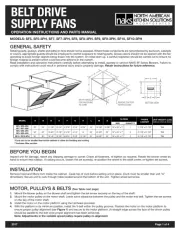
21 August 2025
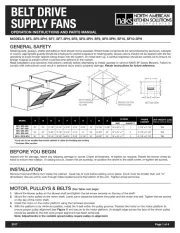
21 August 2025
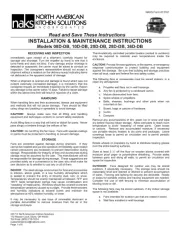
21 August 2025
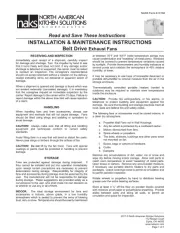
20 August 2025

16 Juli 2025
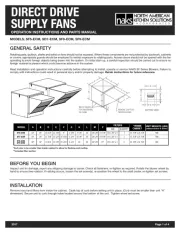
15 Juli 2025
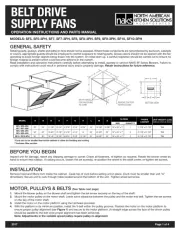
14 Juli 2025
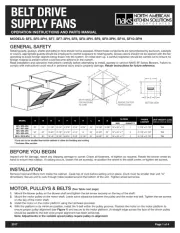
14 Juli 2025

14 Juli 2025
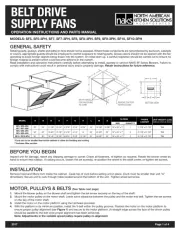
14 Juli 2025
Bedienungsanleitung Dunstabzugshaube
- Eico
- Arthur Martin-Electrolux
- Airforce
- Axiair
- Panasonic
- Midea
- MX Onda
- Seenergy
- ETNA
- Steel Cucine
- Svan
- Airone
- Concept
- Cookology
- Itho
Neueste Bedienungsanleitung für -Kategorien-
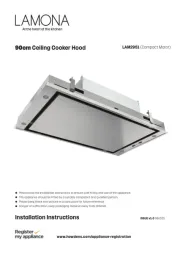
21 August 2025

21 August 2025
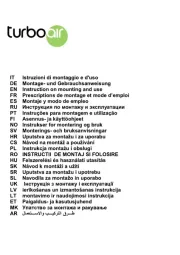
20 August 2025
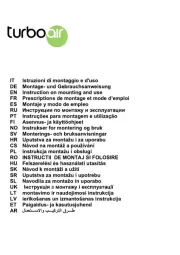
20 August 2025
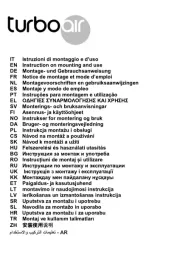
20 August 2025
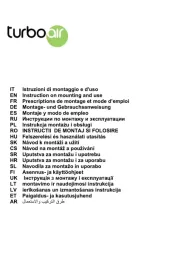
20 August 2025
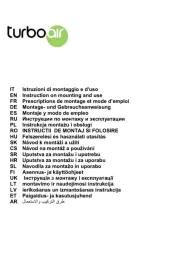
20 August 2025
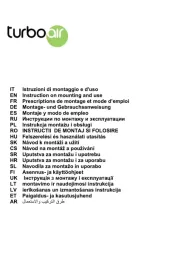
20 August 2025
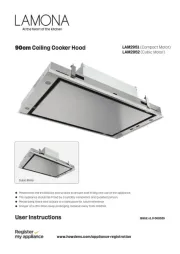
20 August 2025
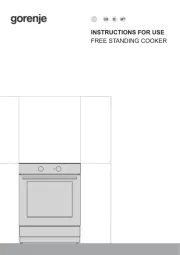
20 August 2025